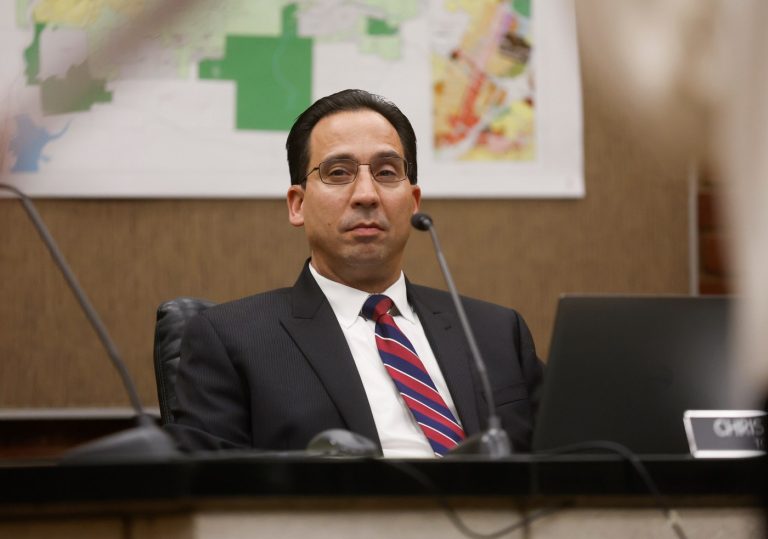Experts differ in their recommendations about the best way to time your flu and COVID-19 shots, but they agree on one thing: People should do whatever results in them actually getting the vaccines.
The Centers for Disease Control and Prevention recommend that everyone 6 months and older get an annual flu shot and the newly approved and updated vaccines for COVID-19.
The guidance is more complicated for respiratory syncytial virus, with vaccination recommended for people over 75; those between 60 and 74 who have chronic conditions; and women between 32 and 36 weeks of pregnancy who will deliver during RSV season. Anyone who got the RSV shot last year doesn’t need another one, unless they became pregnant again and need to pass protection to a new baby.
People get the best immune response if they space out their flu and COVID-19 shots, but they need to consider if they will return to get another vaccine, or if they’re likely to forget or get busy, said Jenna Guthmiller, an assistant professor of immunology and microbiology at the University of Colorado School of Medicine. She didn’t specify how far to space them out.
The shots are safe to get together.
“If it’s convenient for you to get them all at the same time, just do it,” she said. “Some protection is better than no protection.”
Ideally, people would get their shots around late October, since the flu typically takes off in the state near the end of the year, Guthmiller said.
Not everyone agrees that waiting is the best plan.
While some people like to time their shots closer to the holidays, getting them early ensures people won’t get sick or pass the viruses to others during the early weeks of respiratory season, said Dr. Amy Duckro, an infectious disease specialist at Kaiser Permanente Colorado. She personally likes to get the flu and COVID-19 shots together, so as to only have side effects once a year.
“I’d recommend getting them as soon as you can. It does take some time for immunity to develop,” she said.
Given the high amount of COVID-19 circulating right now, the best thing is to get that shot as soon as possible, said Beth Carlton, chair of environmental and occupational health at the Colorado School of Public Health. For flu, people should get adequate protection as long as they get the shot before Halloween, she said.
Last year, flu shot uptake held steady, while the number of people getting COVID-19 vaccines dropped. Relatively few people got a new shot for RSV, which typically causes colds but can be deadly in infants and older people.
So far, uptake of the new flu and COVID-19 shots has been relatively strong, said Jessica Chenoweth, who oversees 17 CVS pharmacy locations along the Front Range. She isn’t sure what changed to revitalize people’s interest.
“It feels on-pace to what I’ve seen in previous years,” she said.
People who got a COVID-19 booster during the summer wave should wait two months before getting their next dose, though they could get the flu shot earlier if they want, Chenoweth said. Generally, though, she recommends getting all seasonal vaccines at once, to avoid forgetting one.
Some people who got the COVID-19 vaccine for free last year will have to pay out of pocket this fall. The Bridge Access program, which paid for COVID-19 vaccines for uninsured people, ended this year, but the CDC said it would allocate $62 million for state and local health departments to buy vaccines they can give out for free.
Chenoweth said the shot costs about $200 if an uninsured person pays cash. Nearly all insurance plans cover them.
The flu and COVID-19 vaccines change each year, to try to match the dominant variants. RSV doesn’t evolve as quickly, so the vaccine is the same one that rolled out last year.
For the first time in a decade, the flu vaccine will include three strains, rather than four. The influenza B Yamagata strain hasn’t shown up in testing since March 2020, and flu manufacturers dropped it from the vaccine this year. Unlike influenza A strains, flu B only circulates in people, so when respiratory virus transmission plummeted early in the pandemic, the Yamagata strain apparently couldn’t survive, said Guthmiller, the CU researcher.
“There’s a strong belief that it’s gone extinct,” she said.
The updated Pfizer and Moderna COVID-19 vaccines teach the body to make the spike protein from the KP.2 variant of the virus, which is a cousin of the currently dominant KP.3.1.1. When the body sees the spike, it develops antibodies against it, reducing the risk a person will get sick if they encounter the actual virus. The disembodied spike proteins produced after vaccination can’t give anyone the virus, though some people feel tired or achy because of their immune response.
The updated Novavax shot, which injects the spike protein directly, is based on the JN.1 variant, which dominated last winter.
In addition to getting vaccinated, people can protect themselves and others by staying home if they feel sick, washing their hands frequently, practicing general healthy habits and wearing masks in crowded spaces if they feel comfortable doing that, Duckro said.
“We certainly wouldn’t want to rely on vaccines entirely,” she said.












